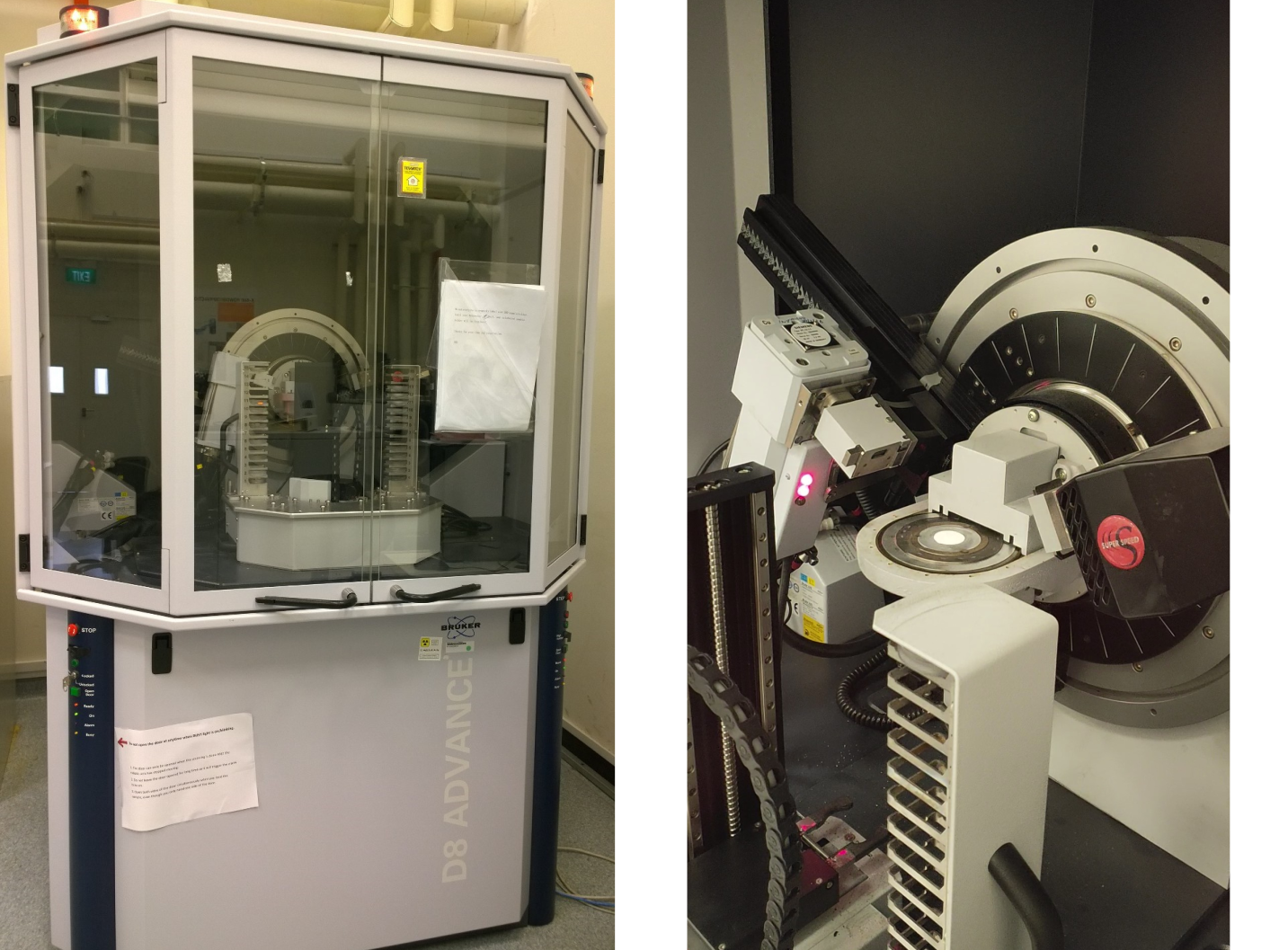Grazing Incident X-ray Diffraction Analysis (GIXRD)

High Resolution X-ray Diffraction Analysis (HRXRD)

Single Crystal X-ray Diffraction Analysis (SCXRD)
Small Angle X-ray Scattering & Wide-Angle X-ray Scattering (SAXS/WAXS)
Small angle X-ray scattering (SAXS) is a technique used to investigate the structure of particle systems in order to quantify the size distribution and shape of the particles. This method involves x-ray scattering at very low angles (0-10° in 2q) capturing particle sizes in the range of 1-100 nm. X-ray scattering at wider angles can also be collected at >10° in 2q capturing smaller dimensions of <1nm. This corresponds to wide angle X-ray scattering (WAXS) and it probes the crystalline structure of the particle. The WAXS data carries the same information as the data collected using normal XRD analysis.
The SAXS-WAXS technique can also be applied in reflection mode and this is commonly called as Grazing Incidence (GI) SAXS-WAXS. GISAXS/GIWAXS is use to characterise the structural assembly of nanoparticles and crystals on a surface.
SAXS is applied to a broad range of materials, including colloids of all types of metals, cement, oil, polymers, proteins, foods and pharmaceuticals found in academic research and quality control in industry.


XRD Bruker D8 Advance
- Cu-Kα radiation operated at 40kV and 40mA
- Vertical high precision goniometer
- 1D type detector: The LynxEye 1-dimensional detector is based on silicon strip detector technology capable of collecting at a high count rate. High quality data with high intensity can be collected in a short time
- Batch sample automatic loader
- Beam knife attachment for data collection with low background at low 2Theta angle
- X-ray diffraction analysis of crystalline materials for phase ID, quantification, micro-structure analysis and crystal structure refinement/determination

X-ray reflectivity (XRR)

Crystal orientation mapping

High-flux X-ray source
X-ray Fluorescence Spectroscopy (XRF)
XRF machines are used to determine bulk elemental composition in a non-destructive way.
With detection limits down to ppm and the ability to analyse from Boron to Uranium, XRF offers an alternative to smaller volume, destructive elemental analysis like ICP-MS or EPMA.
in-situ X-ray diffraction/scattering analysis
Some of our X-ray instruments come with different stages that allow for in-situ X-ray scattering experiments.
If you have some in-situ or in-operando experiments that requires a DIY or a different set-up we are more than happy to discuss the possibilities. What we care most is the quality of data you can collect consistent with the safe operation of the instrument.
Anton Paar DHS 1100 heating stage
Heating range: RT to 1100 °C
Used in Bruker D8 Discover

Linkam heating-cooling stage
range: -150°C to 350°C
transmission samples: powder, liquid or gel
reflection samples: thin film, plate
used in Xenocs Nanoinxider for SAXS/WAXS and GISAXS/GIWAXS
Electrochemical cell
for use in Rigaku Smartlab















/enri-thumbnails/careeropportunities1f0caf1c-a12d-479c-be7c-3c04e085c617.tmb-mega-menu.jpg?Culture=en&sfvrsn=d7261e3b_1)

/cradle-thumbnails/research-capabilities1516d0ba63aa44f0b4ee77a8c05263b2.tmb-mega-menu.jpg?Culture=en&sfvrsn=1bc94f8_1)























